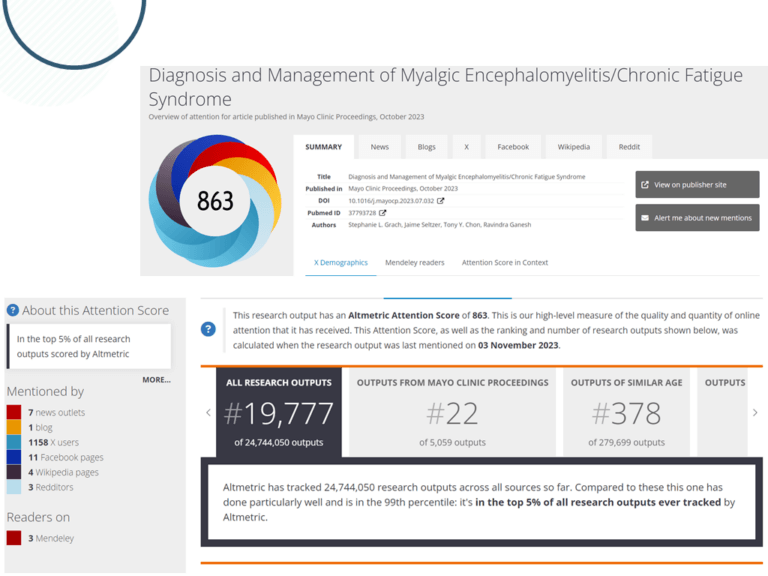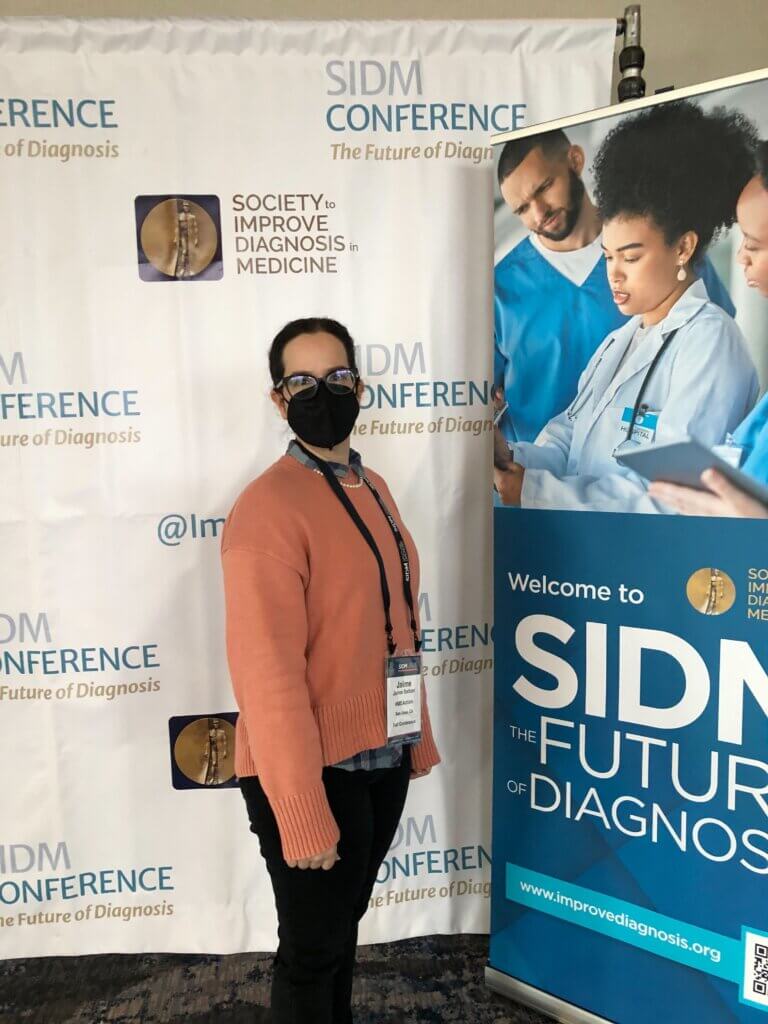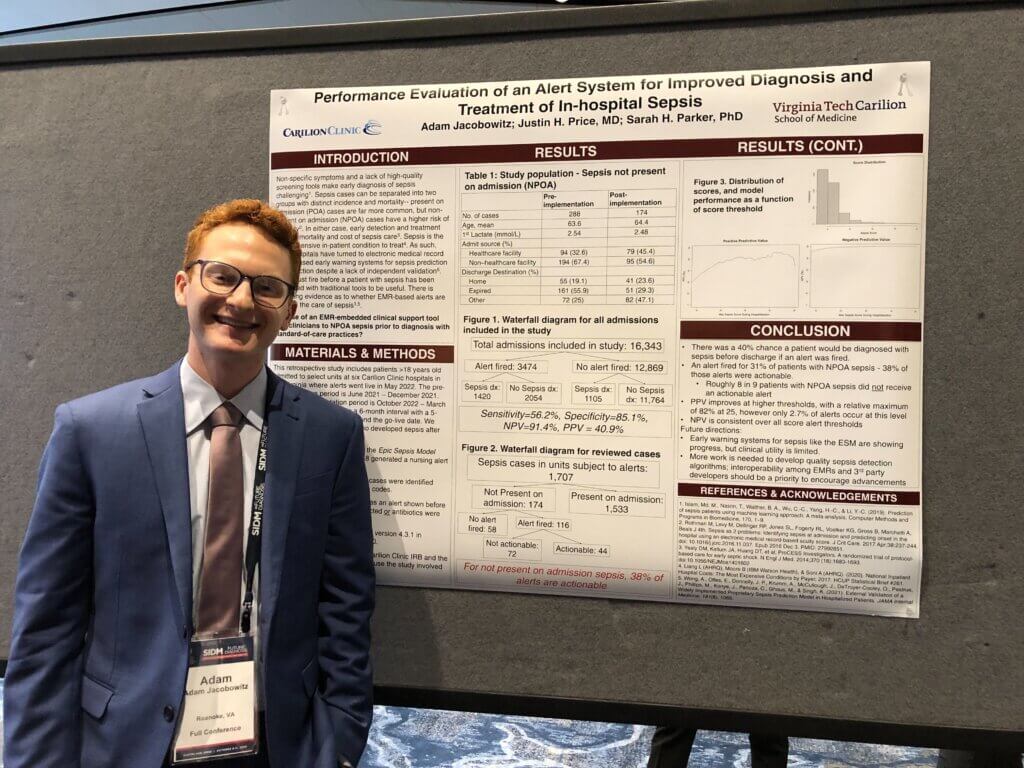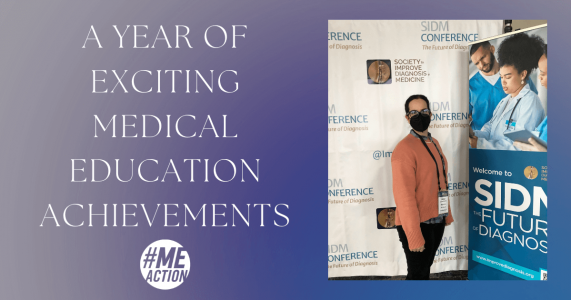A year ago, we were proud to announce that #MEAction and Mayo Clinic Rochester had won a grant for diagnostic improvement, with Ravindra Ganesh, and Stephanie Grach, and I on the grant as co-investigators. Our project, Improving Diagnostic Accuracy of Myalgic Encephalomyelitis/Chronic Fatigue Syndrome Through Implementation of an Enhanced Education Protocol and Care Process Model has so far produced:
- Updates to the Mayo Clinic public-facing page on ME/CFS
- A new diagnostic and treatment algorithm for ME/CFS on AskMayoExpert, available to all clinicians in the Mayo system and outside subscribers
- A successful Concise Clinical Review in Mayo Clinic Proceedings with an associated one-credit continuing medical education (CME) course
- A longer, video-based CME series, which has been scripted and half of which has already been recorded, along with pre- and post-questions
This year-long project has been fruitful, and has led to additional projects we’ll be excited to announce in the future!
There were many aspects of the work we found especially useful and rewarding. We were very pleased with the diagrams included in our Concise Clinical Review, Diagnosis and Management of Myalgic Encephalomyelitis/Chronic Fatigue Syndrome:



The paper has earned an impressive Altmetric score: a measure of how much attention the paper has received! The Altmetric score is in the high 800s, meaning it is likely one of the most talked-about and shared papers of the year. It’s in the top 1% of papers of a similar age for shares, and the top 3% in Mayo Clinic Proceedings, which is an extremely prestigious journal. It’s the #22 paper of all time published in this journal as well. It’s also been cited in seven news outlets, saved 40 times by Mendeley (people who intend to cite the paper), and has already been cited in another peer-reviewed source!
Presenting at the Society to Improve Diagnosis in Medicine’s Annual Conference
 With the project complete, I had the privilege to be able to attend and speak this at the Society to Improve Diagnosis in Medicine’s 16th Annual conference, The Future of Diagnosis: Achieving Excellence and Equity in Cleveland, Ohio. I was invited to present the group’s findings and address questions on a panel with other grantees. #MEAction was also invited to give a talk at the Patient Summit, where I told #MEAction’s remarkable story to an audience of ~400 patient advocates and medical providers.
With the project complete, I had the privilege to be able to attend and speak this at the Society to Improve Diagnosis in Medicine’s 16th Annual conference, The Future of Diagnosis: Achieving Excellence and Equity in Cleveland, Ohio. I was invited to present the group’s findings and address questions on a panel with other grantees. #MEAction was also invited to give a talk at the Patient Summit, where I told #MEAction’s remarkable story to an audience of ~400 patient advocates and medical providers.
 The keynote speaker at the Patient Summit was Jake Tapper, CNN reporter and his daughter, Alice Paul Tapper, who talked about a harrowing near-miss with Alice’s appendicitis, and the effect that being a minor and female-presenting had on her case. I was impressed by the way Alice articulated what she’d gone through– and also the way her father bounced the ball back to her, to ensure the audience understood it was her story to tell.
The keynote speaker at the Patient Summit was Jake Tapper, CNN reporter and his daughter, Alice Paul Tapper, who talked about a harrowing near-miss with Alice’s appendicitis, and the effect that being a minor and female-presenting had on her case. I was impressed by the way Alice articulated what she’d gone through– and also the way her father bounced the ball back to her, to ensure the audience understood it was her story to tell.
The days after the DxQI Grantee presentations and the Patient Summit were filled with fascinating talks from invited experts. But one of the most interesting aspects of the conference for me were the young researchers, clinicians, and quality improvement specialists who presented their posters at the conference.
 I was impressed with the level of devotion to their topics, but also how honest they were about what they’d really learned and what they hoped to accomplish with their work. It was a refreshing mix of earnestness and scholarship, with a strong sense of ethics. One researcher had been working on someone else’s proprietary program for early detection of sepsis and found that the patented warning system was ineffective. He explained there were so many false negative warnings that nurses would stop paying any attention to the alert, and that the positives that were correct were already caught by staff, so there was not much use in the system as it was.
I was impressed with the level of devotion to their topics, but also how honest they were about what they’d really learned and what they hoped to accomplish with their work. It was a refreshing mix of earnestness and scholarship, with a strong sense of ethics. One researcher had been working on someone else’s proprietary program for early detection of sepsis and found that the patented warning system was ineffective. He explained there were so many false negative warnings that nurses would stop paying any attention to the alert, and that the positives that were correct were already caught by staff, so there was not much use in the system as it was.
It shouldn’t be surprising, though, that a group focused on improving healthcare and health equity turns out to be an interesting and kind group of people.
Next month, I’ll be traveling to Bethesda, where I will give a presentation to the National Institutes of Health (NIH) Symposium for Promoting the Advancement of Research Knowledge in ME/CFS (SPARK ME), a workshop for young and early career investigators who want to pursue research in infection-associated chronic illness. Thereafter, I’ll be at the associated NIH conference, Advancing ME/CFS Research: Identifying Targets for Intervention and Learning from Long COVID.
Hope to see some of you there, and looking forward to being able to pass on more news soon!
All of this work was made possible because of this community’s dedication to #MEAction. It is with your financial support that allows me to do this work for the community. If you are able to give this season, I hope you will keep #MEAction in mind– there is more to come and we can’t wait to share our plans for next year! You can donate now by clicking below:
Sincerely,
Jaime Seltzer
Scientific Director, #MEAction






 ) and a message about #MillionsMissing with your own networks. Desktop: Download by right clicking on the image or clicking on the download icon in the bottom right corner of the image. Mobile:
) and a message about #MillionsMissing with your own networks. Desktop: Download by right clicking on the image or clicking on the download icon in the bottom right corner of the image. Mobile: